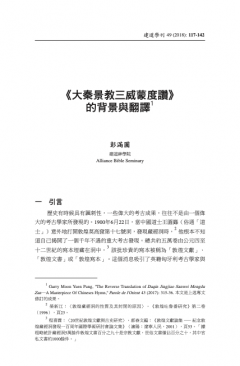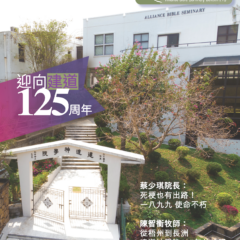《大秦景教三威蒙度讚》的背景與翻譯/彭滿圓
彭滿圓
撮要
《大秦景教三威蒙度讚》可以被視為一首最古老的中國聖詩,那是在公元 八世紀末,由當時在中國的景教教士,從東敘利亞語的《榮歸主頌》所翻譯的寫本。不過,在翻譯為中文的過程中加上一些新的內容,形成了一個融合了東敘利 亞語和中文獨特的文本,使它成為一個在文化與宗教交流過程中的產物,無論從神學與歷史的角度來看,都具有非常重要的意義。因此,它是其中一份最重要的景教寫本,反映出景教在唐代中國的敬拜禮儀。本文嘗試從不同的角度分析它的背景,並將中文文本的內容重新翻譯為東敘利亞語,作為一種反向的翻譯。
ABSTRACT
Daqin Jingjiao Sanwei meng du zan《大秦景教三威蒙度讚》 (A Hymn of Daqin Jingjiao to Praise for the Salvation of the Triune God) can be regarded as the oldest Chinese hymn. It is translated from the East Syriac text Gloria in excelsis Deo by the priest of Jingjiao in China at the end of 8th Century A.D. However, in the process of translation, some new contents were composed in the Chinese text. Hence, a unique text combined with East Syriac and Chinese was formed. It becomes the product of cultural and religious exchange process. In terms of theological and historical point of view, it has very important significance. In addition, it is one of the most important Jingjiao manuscripts to reflect the liturgy of Jingjiao in China during the Tang Dynasty. This paper aims to analyze the background of Sanwei Mengdu Zan from different perspectives and to translate the Chinese text into East Syriac again as a reverse translation.
原載於《建道學刊》49期(2018年1月),頁 117-142。







